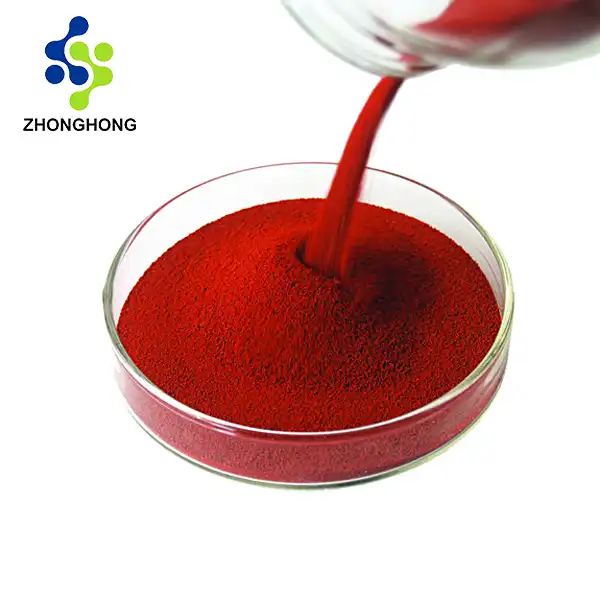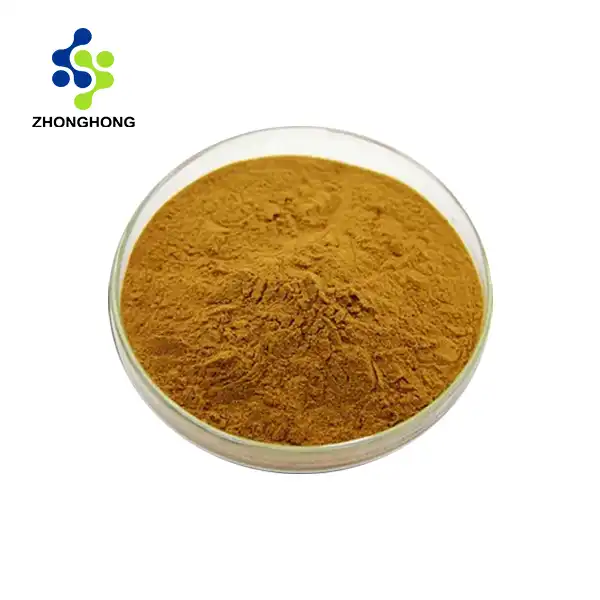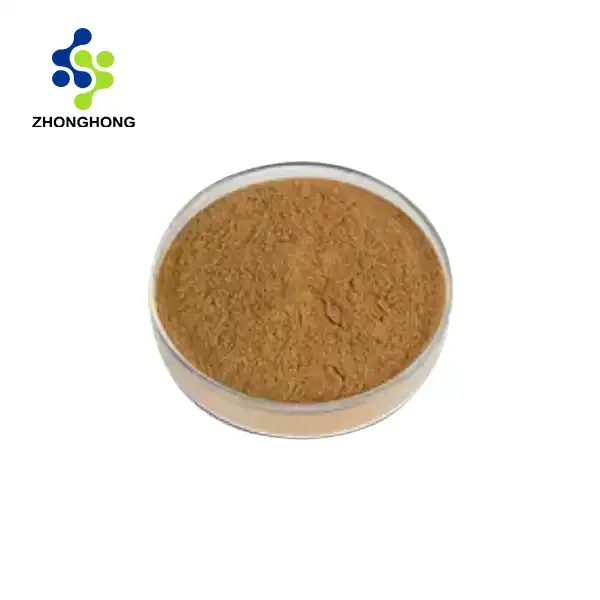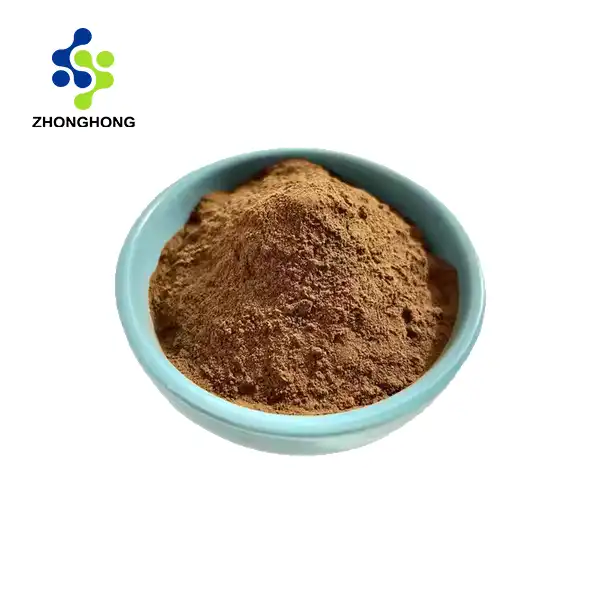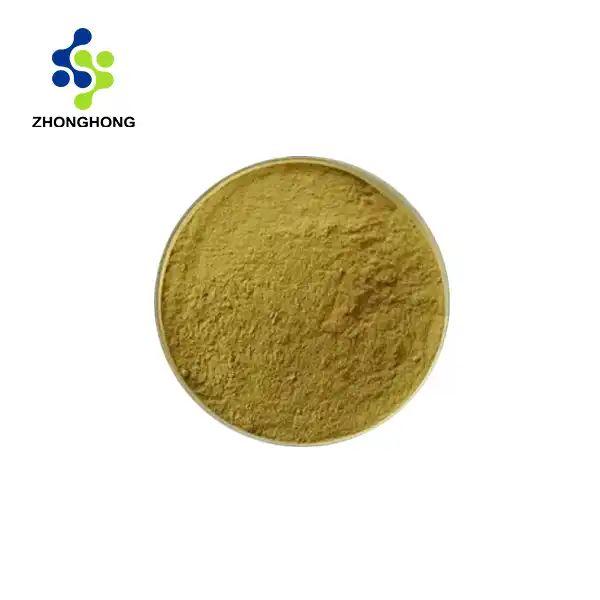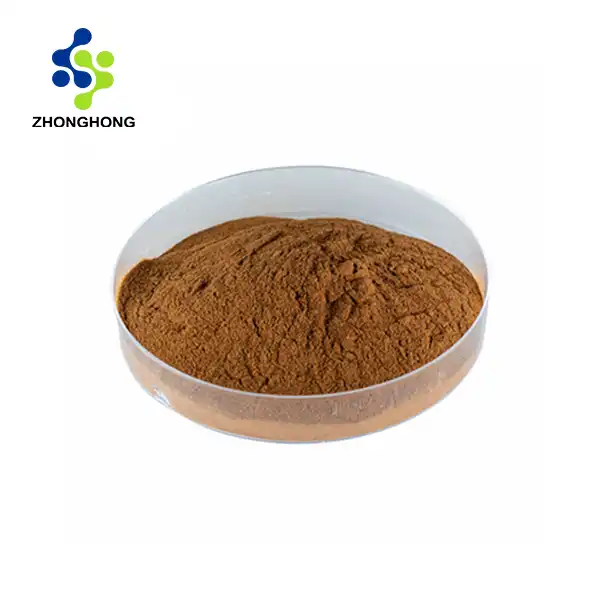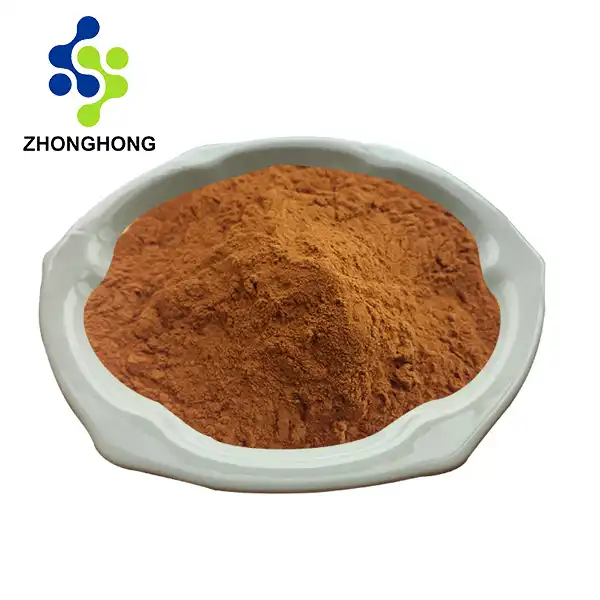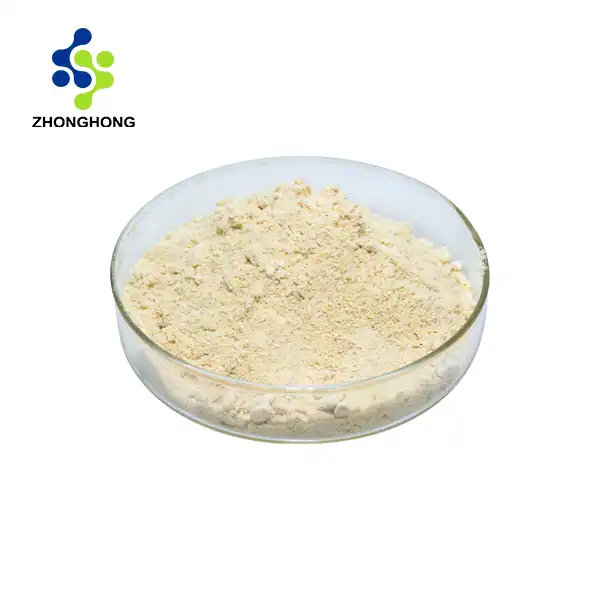Understanding Kojic Acid Powder Properties
Chemical Structure and Stability
Kojic acid powder, a natural compound derived from various fungi species, possesses a unique chemical structure that contributes to its versatility in multiple industries. The molecular formula C6H6O4 represents this pale yellow crystalline substance, which features a cyclic structure with hydroxyl and carbonyl groups. These functional groups play a crucial role in its interactions with other molecules and its stability under various conditions. Understanding the chemical structure is paramount for researchers and manufacturers working with kojic acid powder, as it directly influences melting behavior, solubility, and reactivity in different applications.
Melting Point and Thermal Behavior
The melting point of kojic acid powder typically ranges between 152°C to 154°C (305.6°F to 309.2°F) under standard atmospheric pressure. This relatively high melting point underscores the importance of precise temperature control during the melting process. When heated, kojic acid powder undergoes a phase transition from solid to liquid state, a process that can be influenced by factors such as purity, particle size, and the presence of impurities. Careful observation of thermal behavior during melting is essential to maintain the compound's integrity and prevent unwanted degradation or chemical changes that could compromise its efficacy in final products.
Solubility Characteristics
Kojic acid powder exhibits varying degrees of solubility in different solvents, a property that significantly impacts its processing and application methods. It demonstrates good solubility in water, ethanol, and other polar solvents, which is advantageous for many formulation processes in cosmetics and pharmaceuticals. However, its solubility can be affected by pH levels and temperature, factors that must be considered when developing melting protocols or incorporating kojic acid into complex formulations. Understanding these solubility characteristics enables researchers and product developers to optimize dissolution techniques and create stable, effective products across diverse industries.
Melting Techniques for Different Applications
Laboratory-Scale Melting Methods
In laboratory settings, precision and control are paramount when melting kojic acid powder for research or small-scale production. One effective method involves using a temperature-controlled hot plate with a magnetic stirrer. Place a small amount of kojic acid powder in a clean borosilicate glass beaker, then set it on the hot plate. Gradually increase the temperature while stirring gently with a magnetic stir bar. Monitor the process closely with a calibrated thermometer, ensuring the temperature remains below the degradation point. For even more precise control, consider using a melting point apparatus, which allows for visual observation of the melting process and accurate temperature readings. These techniques are particularly valuable for biotechnology companies focusing on maintaining the biological activity and purity of kojic acid during melting.
Industrial-Scale Melting Processes
For larger-scale operations in pharmaceutical or food industries, industrial melting processes must balance efficiency with quality control. Jacketed vessels equipped with temperature sensors and agitators are commonly employed. These systems allow for uniform heating of larger quantities of kojic acid powder while maintaining precise temperature control. In some cases, vacuum melting techniques may be utilized to lower the melting point and reduce the risk of thermal degradation. Continuous flow melting systems can also be implemented for high-volume production, where kojic acid powder is fed into a heated chamber and emerges as a molten liquid. These industrial methods often incorporate in-line quality control measures to ensure consistency and purity throughout the melting process.
Specialized Melting for Cosmetic Formulations
The cosmetics industry requires unique approaches to melting kojic acid powder that preserve its skin-brightening properties while ensuring seamless integration into various product formulations. One effective method involves creating a pre-dispersion of kojic acid powder in a compatible cosmetic-grade oil or emollient. This mixture is then gently heated in a water bath, with temperatures carefully controlled to prevent overheating. For water-based formulations, kojic acid powder can be dissolved in a small amount of heated water or glycerin before incorporation into the main formula. Advanced techniques such as phase inversion temperature (PIT) methods may be employed for emulsion-based products, allowing for the melting and incorporation of kojic acid powder at optimal temperatures that enhance stability and efficacy in the final cosmetic product.
Safety Considerations and Quality Control
Proper Handling and Storage
Ensuring the safe handling and storage of kojic acid powder is crucial for maintaining its quality and protecting personnel. Store the powder in airtight, opaque containers to shield it from light and moisture, which can cause degradation. Maintain a cool, dry environment with temperatures below 25°C (77°F) for optimal long-term stability. When handling kojic acid powder, always use appropriate personal protective equipment (PPE), including gloves, safety goggles, and a dust mask or respirator to prevent inhalation of fine particles. Implement proper ventilation systems in areas where the powder is handled or melted to minimize exposure risks. Develop and enforce clear protocols for spill management and disposal, adhering to local regulations and environmental safety standards.
Temperature Monitoring and Control
Precise temperature monitoring and control are essential aspects of melting kojic acid powder safely and effectively. Utilize calibrated thermometers or thermocouples to accurately measure temperatures throughout the melting process. Implement redundant temperature monitoring systems in industrial settings to ensure consistent and reliable readings. Consider using programmable temperature controllers that can maintain specific heating profiles, crucial for preventing overheating and maintaining the powder's integrity. For critical applications, especially in pharmaceutical manufacturing, incorporate data logging systems to track and record temperature data for quality assurance and regulatory compliance purposes. Regular calibration and maintenance of temperature control equipment are vital to ensure accuracy and reliability in melting operations.
Quality Assurance Protocols
Establishing robust quality assurance protocols is paramount when working with kojic acid powder, particularly in industries where product purity and efficacy are critical. Implement a comprehensive testing regimen that includes melting point determination, HPLC analysis for purity assessment, and spectroscopic methods to verify the compound's identity and structural integrity post-melting. For biotechnology and pharmaceutical applications, conduct bioassays to confirm the retention of biological activity after the melting process. In cosmetic formulations, perform stability tests on final products to ensure the melted kojic acid remains effective throughout the product's shelf life. Develop and maintain detailed standard operating procedures (SOPs) for each step of the melting process, including equipment cleaning and validation protocols. Regular audits and reviews of these quality assurance measures help maintain high standards and facilitate continuous improvement in kojic acid powder processing techniques.
Conclusion
Mastering the art of melting kojic acid powder is crucial for harnessing its full potential across various industries. By understanding its properties, employing appropriate techniques, and adhering to strict safety and quality control measures, professionals can ensure optimal results in their applications. Whether in research, manufacturing, or product development, proper melting practices are key to unlocking the benefits of this versatile compound. If you want to get more information about Kojic Acid Powder, you can contact us at liaodaohai@gmail.com.
_1728976869676.webp)
